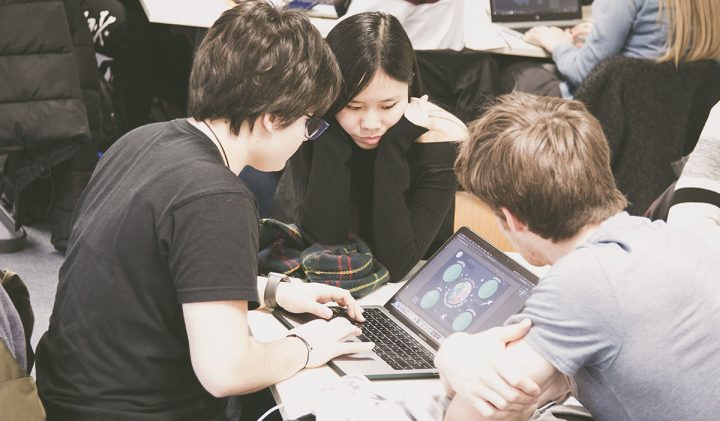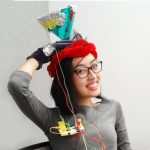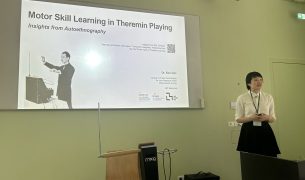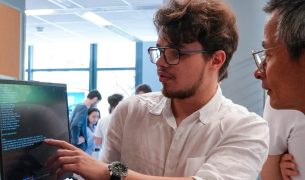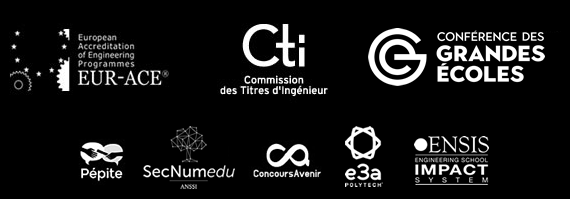The pace of technological change continues to accelerate, forcing us to master the web in all its forms. Engineering professions are at the core of this digital transformation, to enable companies to adapt to the digital revolution, to the needs of their teams and their customers.
Knowing how to write and adapt programs in a language such as Python, using computer tools such as VBA Excel, or mastering the exchange and management of data in a secure manner, are important skills for tomorrow’s engineers, who must understand and anticipate the revolutions brought about by the spread of new technologies.
These tools and methods offer a field of application where engineering projects and learning-by-doing pedagogy make perfect sense. Here is a closer look at three 4th year industrial innovation projects developed by the class of 2023.
Automation of Closing Inventory Tasks
Each year, the inventory team must conduct the closing inventory at the end of December. To do this, they must complete the various steps of the process in less than two weeks. Most of them are done manually and the goal is to make as few mistakes as possible.
Our mission is to automate Excel files with VBA. In the long run, the goal was to automate all actions taken, such as importing and harmonizing data or correcting erroneous data.
We were separated to work on different tasks. We had to do as many tasks as possible, but we knew very little about VBA at the beginning. The partner provided us with computers and created a team, where we could easily communicate, ask questions and present our work. We could approach them at any time, even outside the Tuesday morning slot, if needed.
Quality was prioritized over quantity: our code had to be complete, clear, robust, usable, and error-free, and we included a user guide in all our files. Each file we were working on was validated by the team after acceptance. Finally, we have automated about ten Excel files, and there are still others to be processed.
Python Program Development to Optimize the Profitability of Hydroelectric Structures
The project aims to realize a python program. This program is based on a multi-agent structure. It aims to optimize the profitability of hydroelectric structures via a simplex.
The program has multiple input data which are: the different levels of the basins, the different flows in and out of the basins, the power range of the structure, the operating range of the structure, the market prices , and their characteristics.
At the end of the program, we obtain the calculation times, the placements on the different markets, and the results of the simplexes.
The program consists of initialization files that allow importing the input data and setting the context of the optimization. These include the initialization of the station, markets, flows and operating ranges. There are also parameter data that must be entered by the user.
As far as the calculation and resolution structure of the program is concerned, we have agents that each represents one hour and contain a lot of information about the state of the environment and the operation of the station during its hour. Then we have four and twenty-four-hour agents that work like the previous agents but on wider time ranges to adapt to the markets. Finally, we have an observer agent that will allow us to manage communication between the agents and to have a global vision of the optimization in progress, which each agent does not have.
Creation of an Online Platform for Data Dissemination
Our project in partnership with the Laboratoire National de Métrologie et d’Essais (LNE) consists of the realization of an online platform for data diffusion. This platform will have 2 main uses:
– The first will be to upload a multitude of files on the platform, the files in question will be able to be associated with a corpus in particular to facilitate the readability of the data
– The second utility will be to retrieve the corpus of data that you want to have locally on your machine
This will be very useful in the context of the LNE since the data is used for an AI evaluation in order to test its reliability and accuracy, the teams in charge of retrieving the data are not necessarily those in charge of the AI evaluation. Therefore, it is important to have a platform that can allow the dissemination of a large amount of data to facilitate the exchange of data between each team.
We decided to use Python Django to develop our platform. This allowed us to add some features to our site such as the fact that we have to identify ourselves on the site before being able to upload files on the platform. This will help prevent anyone who is not associated with LNE from interacting with the site.









